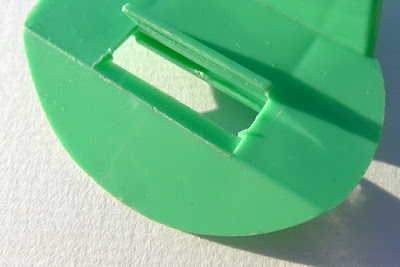I found many (really! around 200!) advertisements for the Magic Flute in the Australian newspapers. Most of them are just a few lines mentioning its availability in this or that shop. But a good bunch of them show a drawing, and they will help us to sort out our lacunary knowledge... or create even more mess in our attempt of understanding.
1905-1923
The very first ad for the Magic Flute I found dates of 1905 (Jun. 30), and it was a real surprise for me. It was not sold By Albert & Son, but by Natty Wood's bazaar, Wollongong. Almost the same ad was published in August:

Was Albert & Son the wholesaler ? I'm not sure of that. Indeed, as we will, it was probably the American version of the Magic Flute, and it may have been imported by the Londonian shop Ellisdon's. Why ? because many of the first ads are published by Ellisdon, and it was a huge wholesaler, with its novelty catalog. Ellisdon's also used to sell a "Magic Flute" in the 1930-40s that was said to be "British make" and we don't know if the later aussie nose flute was this version, or a Humanatone... Anyway, in the 1900s, it really seems the Magic Flute is the American version, according to the graphics.
Ellisdon's (Sidney branch) ads from Nov. and Dec.1906, and 1907:


But at the same time (Nov. 1906), The Union Mfg & Agency Co. (Melbourne) sells a "Magic Flute" subtitled "Humanatone", with a Humanatone picture...('Houston, we have a problem!').
Union Mfg ads from Nov. 1906 and Jun. 1908:
 |  |
At the same period of time, other Sidney shops sells the early Magic Flute, like in this cute announcement (same Nov. 1906 month):

That's only in 1907 (Dec. 14) that I found an ad from J. Albert & Son.
Albert's ads from 1907 and 1908:


In 1913, The Union Mfg still sells a "Magic Flute/Humanatone", and the Alberts an early Magic Flute. The last appearance of the early MF, dates of July 1916. It's an ad from Shaw and Sons, Brisbane:

In fact, "Mr. Henderson" will still be used as a illustration until 1923, playing the early Magic Flute, but no one could recognize it. Here is an ad by Ellis Smith & Co, Sydney (July 1923):

1924-1946
The trademark 'Magic Flute' was registered in December 1924, but in found no ad with an illustration at that time. But something happened then. In September 1929, the Union Mfg Co., Melbourne, publishes an ad for the Magic Flute, with the usual Humanatone engraving. But... but this time the subtitle "Humanatone" has disappeared, and more, compared to its 1906 and 1908 ads, the name 'Humanatone' has deliberately been erased (blackened) from the nose flute.
Union Mfg 1929 ad, and comparison with the 1908 illustration:


What does it mean? Albert registered the trademark at the end of 1924 and launched the new model (the stamped one). So, Frank Albert was the sole to be allowed to use the brand. It became impossible for other shops to continue to sell 'Magic Flutes' from other origin that the Albert's ones (maybe also, Frank Albert signed an exclusivity clause with the Humanatone Co). Anyway, since the new Magic Flutes were stamped 'Magic Flute', it would have been weird to show a nose flute stamped 'Humanatone' in an advertisement.
Some boring (no illustration) ads then, and until 1941. Then a gap until 1945. Here are the 1941 and 1945 ones (far less funny, besides the mention "always in tune" :)):


1947-1955
1947 seems to be a rebirth for the Magic Flute. It's rather surprising since after the WWII, Humanatone didn't restart a metallic nose flute production, but definitely turned the plastic model designed by Ernest W. Davis. In Australia, the Magic Flute is advertised again with illustration. A new illustration! Not the early MF, not a disguised metal Humanatone, no, a real Albert's stamped Magic Flute! The first I found dates of April 1947, J. Stanley Johnston ad.
1947, 1948 and 1949 advertisements:


Still more advertisements then, but less and less.
1950 and 1953 ads:


The very last mention I found dates of Dec. 31st, 1955, but sadly with no illustration, and at 6th position in a list of nine instruments:

---
Well, this long series of articles about the Magic Flute is about to be complete, but we still have some documents to publish and will have to draw a conclusion. Stay tuned!
>> Access Part VII
---
Related links :
- The Australian Magic Flute - Part I
- The Australian Magic Flute - Part II
- The Australian Magic Flute - Part III
- The Australian Magic Flute - Part IV
- The Australian Magic Flute - Part V
- The Australian Magic Flute - Part VI
- The Australian Magic Flute - Part VII
---





















































